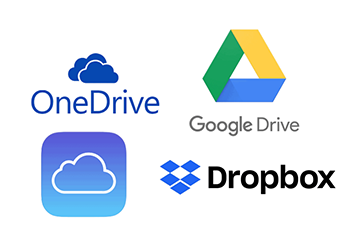How to Use Virtual Assistants Effectively
Virtual assistants (VAs) are no longer just a futuristic concept; they are a practical reality for businesses of all sizes. If you want to streamline your operations, have some free time for strategic thinking, or need help with the mundane tasks that eat up your day, a virtual assistant could be your new best friend. Here's how to use virtual assistants for business effectively.

Understand What VAs Can Do for You
Looking for how to use virtual assistants for tasks? Before going into the hiring process, we must understand what VAs can and cannot do. VAs can handle a range of functions, including:
● Administrative work includes scheduling, email management, and travel arrangements. They can also organize your calendar, book flights, and control your inbox.
● Customer service: responding to inquiries and managing complaints. They can handle customer questions and issues, allowing you to focus on more significant tasks.
● Social media management: creating and scheduling posts and responding to comments. They can keep your social media presence active and engaging.
● Content creation: writing blog posts and creating graphics. Whether you need regular blog updates or eye-catching visuals, a VA can help.
● Data entry: updating databases and managing spreadsheets. They can handle the tedious data tasks that often consume your day.
However, virtual assistants typically can only handle tasks requiring physical presence or specific, high-level expertise if specifically trained.
Define Your Needs Clearly
Clear communication is the key to effectively using virtual assistants for business. Start by listing all the tasks you need help with. Categorize them into daily, weekly, and monthly tasks. Once you have a clear picture, it becomes easier to delegate effectively.
● Daily Tasks include checking emails, updating social media, or managing customer inquiries. These tasks keep your day-to-day operations running smoothly.
● Weekly Tasks: Perhaps prepare reports, schedule content, or update projects. These tasks help maintain your business's rhythm and ensure everything is on track.
● Monthly Tasks could involve more significant projects, such as data analysis, market research, or performance reviews. These tasks result in long-term planning and strategy.
Being clear about your needs ensures that you and your assistant are on the same page, leading to better outcomes and a smoother working relationship.
Hire the Right VA
Finding suitable virtual assistants for productivity involves more than just a good resume. Here's a streamlined approach:
- Identify the Skillset: Match their skills to your tasks. For instance, if you need someone for social media, check to see if they have experience in that area.
- Check Compatibility: They need to fit into your work style. If you're highly structured, a VA who thrives in a flexible environment might not be a good match.
- Trial Period: Start with a short-term contract to see how they handle your tasks and fit your workflow.
Look for virtual assistants for productivity with a proven track record in the areas you need help with. Use platforms like Upwork, Freelancer, or specialized virtual assistant agencies to find candidates. Feel free to ask for references and conduct thorough interviews to assess their capabilities and fit before you use virtual assistants for business.
Effective Onboarding
Even the best assistant needs time to adjust to your specific needs. A thorough onboarding process is one of the most important parts of getting reliable use of virtual assistants for business:
● Introduction to Your Business: Explain your business, goals, and values. This helps the VA understand the bigger picture.
● Detailed Instructions: Provide clear, step-by-step instructions for each task. Use screen recordings or written guides.
● Access to Tools: Check if they can access all necessary tools, from email accounts to project management software.
Take the time to walk them through your processes and tools. Please provide them with all the necessary information to perform their tasks efficiently. Set up regular check-ins during the first few weeks to address any questions or issues they might have.
Communication is Key
Effective communication is critical when working with a virtual assistant, as they are an extension of your team. You must set clear expectations to maintain smooth operations, such as defining working hours, response times, and preferred communication channels. Regular check-ins through weekly or bi-weekly meetings can address any issues and ensure everyone stays on the same page. Establishing a feedback loop is also non-negotiable; constructive feedback allows your assistant to improve and align with your expectations.
Use Slack, Zoom, or Microsoft Teams to facilitate communication, ensuring they know when and how to reach you. You can encourage them to ask questions whenever they are uncertain about something. If you want to learn how to use virtual assistants for tasks, regular updates and feedback sessions will help align your assistant with your goals.
Leverage Technology
Technology can bridge the gap between you and your VA, making collaboration seamless:
● Project Management Tools: Tools like Trello, Asana, or Monday.com help keep tasks organized and track progress.
● Communication Platforms: Other platforms facilitate accessible communication and regular check-ins.
● Document Sharing: Google Drive, Dropbox, or OneDrive makes sharing and collaborating on documents in real time easy.

These tools help manage tasks and keep communication lines open. They allow you to monitor progress, share updates, and collaborate on projects as if you were working side by side.
Trust and Delegate
Delegation can be challenging, mainly if you are accustomed to handling tasks independently. However, building trust is a fundamental part of this process.
Strategies for effective delegation include:
● Start Small: Initiate the process with less urgent tasks to build foundational trust.
● Provide Autonomy: Empower your assistant by allowing decision-making within their responsibilities. Avoid micromanagement, as it negates the purpose of delegation.
● Focus on Results: Evaluate success based on the outcomes rather than the methods. If the results meet the expected standards, the approach is secondary.
Developing trust is a gradual process that significantly contributes to a prosperous working relationship. Begin with straightforward tasks and progressively assign more complex responsibilities as your trust in your virtual assistant’s capabilities strengthens.
Monitor Performance
Maintaining the best output from your assistant necessitates periodic performance evaluations.
Elements of Performance Monitoring
● Set KPIs: Establish key performance indicators corresponding to the tasks and your overarching business objectives.
● Provide Feedback: Offer regular, constructive feedback to aid your VA in professional development.
● Be Adaptable: Be willing to modify tasks or expectations if specific strategies are not yielding desired results.
Ongoing Evaluation Process
Conduct consistent assessments of your VA's work relative to the predetermined KPIs. Discuss their progress and areas where they can enhance their performance; this helps optimize their output and demonstrates your appreciation for their efforts.
Build a Relationship
Virtual assistants are more effective for productivity when they feel valued and are part of the team. Here is how you can help them feel included:
● Recognition: Acknowledge their hard work and achievements.
● Inclusion: Involve them in team meetings and decision-making processes where appropriate.
● Development Opportunities: Encourage them to improve their skills and take on more responsibilities.
Treat your assistant as a part of your team. Recognize their efforts and involve them in key meetings and discussions; this will motivate them and make them more invested in your business's success.
Conclusion
Using a virtual assistant effectively involves clear communication, trust, and leveraging technology. By defining your needs, hiring the right person, and providing them with the tools and support they need, you can unlock a new level of productivity and focus on what truly matters – growing your business.
Remember, a VA is a worker and a partner in your success. Treat them well, and you will both reap the rewards.